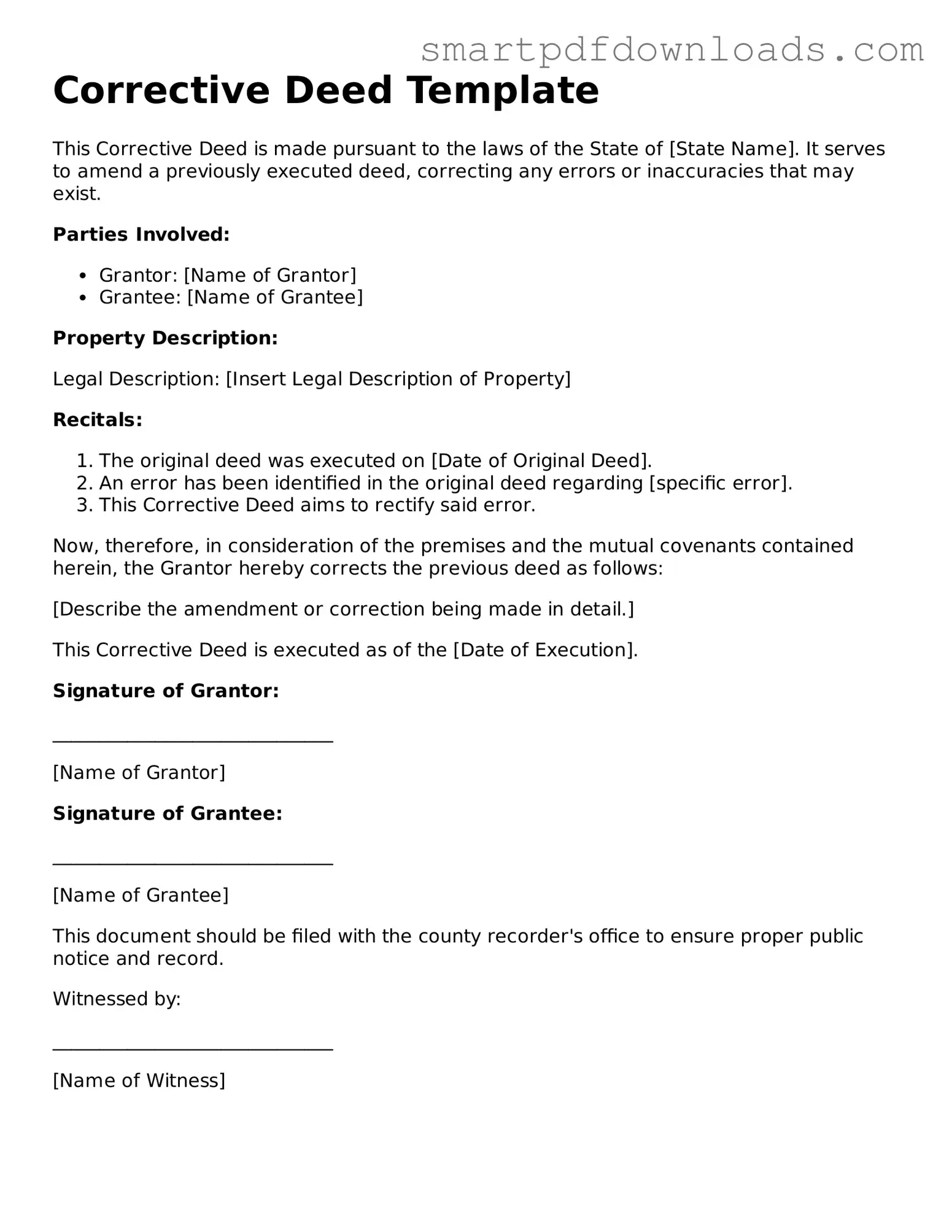Corrective Deed Template
This Corrective Deed is made pursuant to the laws of the State of [State Name]. It serves to amend a previously executed deed, correcting any errors or inaccuracies that may exist.
Parties Involved:
- Grantor: [Name of Grantor]
- Grantee: [Name of Grantee]
Property Description:
Legal Description: [Insert Legal Description of Property]
Recitals:
- The original deed was executed on [Date of Original Deed].
- An error has been identified in the original deed regarding [specific error].
- This Corrective Deed aims to rectify said error.
Now, therefore, in consideration of the premises and the mutual covenants contained herein, the Grantor hereby corrects the previous deed as follows:
[Describe the amendment or correction being made in detail.]
This Corrective Deed is executed as of the [Date of Execution].
Signature of Grantor:
______________________________
[Name of Grantor]
Signature of Grantee:
______________________________
[Name of Grantee]
This document should be filed with the county recorder's office to ensure proper public notice and record.
Witnessed by:
______________________________
[Name of Witness]
